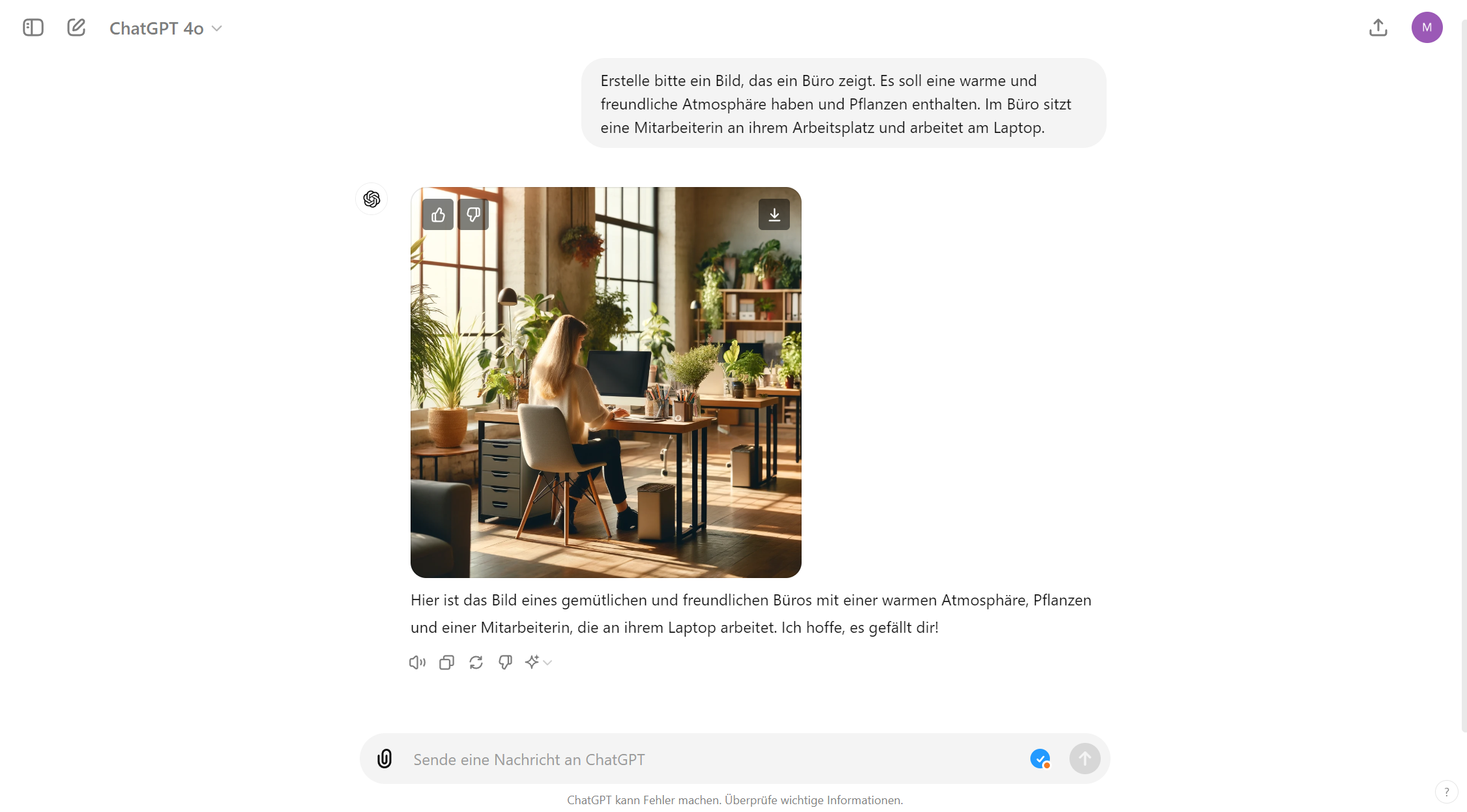Banner advertising is one of the most common forms of display advertising. A banner ad is usually placed on another website. Click here to learn more! ... Continue reading


Advancing digitalisation has profoundly changed marketing in recent years. One of the latest innovations in this area is DALL-E, an AI-based image generation tool from OpenAI. This tool offers marketers completely new possibilities to create creative and customised image content that is perfectly tailored to their needs.
DALL-E is an AI model based on the GPT-3 architecture and has been specially trained to generate images from text descriptions. The name DALL-E is a combination of the surrealist artist Salvador Dalí and the Pixar robot WALL-E, which emphasises the creative and technical nature of the tool. With DALL-E, users can enter simple text descriptions and the AI will generate images that correspond to these descriptions. This capability opens up a wide range of applications in marketing.
DALL-E works on the basis of deep learning and uses a neural network that has been trained on millions of images and their text descriptions. The model uses the GPT-3 architecture to understand text and convert it into visual representations. When a user enters a text description, DALL-E processes this input and generates several image suggestions that reflect the description as accurately as possible. The AI combines various elements from the training data to generate completely new and unique images. The process is based on transformer-based learning techniques, which make it possible to precisely capture both the context and the details of the input and translate them into visual forms.

One of the biggest advantages of DALL-E in online marketing is the ability to create customised images that are precisely tailored to the brand identity and specific campaign objectives. Instead of relying on stock photos, which are often generic and don’t always fit perfectly, marketers can use DALL-E to generate unique and customised visuals. This helps to strengthen brand identity and stand out from the competition.
Traditionally, creating imagery for marketing campaigns often requires a lot of time and resources as it involves working with graphic designers and photographers. DALL-E can significantly speed up this process by creating high-quality images in a matter of minutes. This enables marketing teams to react more quickly to market changes and current trends and thus remain competitive.
By using DALL-E, companies can significantly reduce the cost of image material. As expensive photo shoots or complex design processes are no longer required, production costs are reduced. This is particularly beneficial for small and medium-sized companies, which often have limited marketing budgets.
DALL-E offers almost unlimited creative possibilities. Marketers can let their imagination run wild and generate images that go beyond conventional design boundaries. Whether surrealistic scenes, futuristic depictions or imaginative combinations – with DALL-E there are no limits to creativity. This makes it possible to develop innovative and eye-catching campaigns that attract the attention of the target group.
| Model type | Description of the |
| DALL-E 1 | First version of DALL-E, based on GPT-3, with basic image generation capabilities |
| DALL-E 2 | Improved version with higher image quality and extended functions |
| DALL-E Mini | A smaller, less computing-intensive version that is suitable for less demanding applications |
The cost of using DALL-E can vary depending on the use case and intensity of use. OpenAI offers different pricing models, ranging from free trials to premium subscriptions. There are low-cost options for smaller companies and individual users, while larger companies can benefit from customised solutions tailored to their specific needs.
There are several free alternatives to DALL-E that also offer AI-supported image generation. DeepArt.io and Bing Create are two such options. DeepArt.io transforms photos into works of art in the style of famous artists. Bing Create is free and also utilises AI image generation using DALL-E 3. Both tools are user-friendly and offer a good alternative for those who don’t want to spend money on image generation.
The use of DALL-E harbours some risks and dangers that need to be considered. Misinformation and deepfakes are significant risks, as the technology can easily be used to create manipulated images that are difficult to distinguish from real ones. This can lead to misuse in the form of propaganda, fraud and reputational damage. Privacy concerns are also relevant, as the use and storage of data by AI models must be strictly regulated to protect user privacy.
DALL-E represents a revolutionary development in online marketing and offers extensive opportunities to create customised, cost-efficient and creative image content. By generating images quickly and flexibly, marketing teams can work more efficiently and optimise their campaigns. Despite the numerous advantages, companies should not ignore the ethical and legal aspects to ensure responsible use of the technology. Overall, however, DALL-E offers enormous potential to take visual communication in marketing to a new level.
Olga Fedukov completed her studies in Media Management at the University of Applied Sciences Würzburg. In eology's marketing team, she is responsible for the comprehensive promotion of the agency across various channels. Furthermore, she takes charge of planning and coordinating the content section on the website as well as eology's webinars.
You want to learn more about exciting topics?
